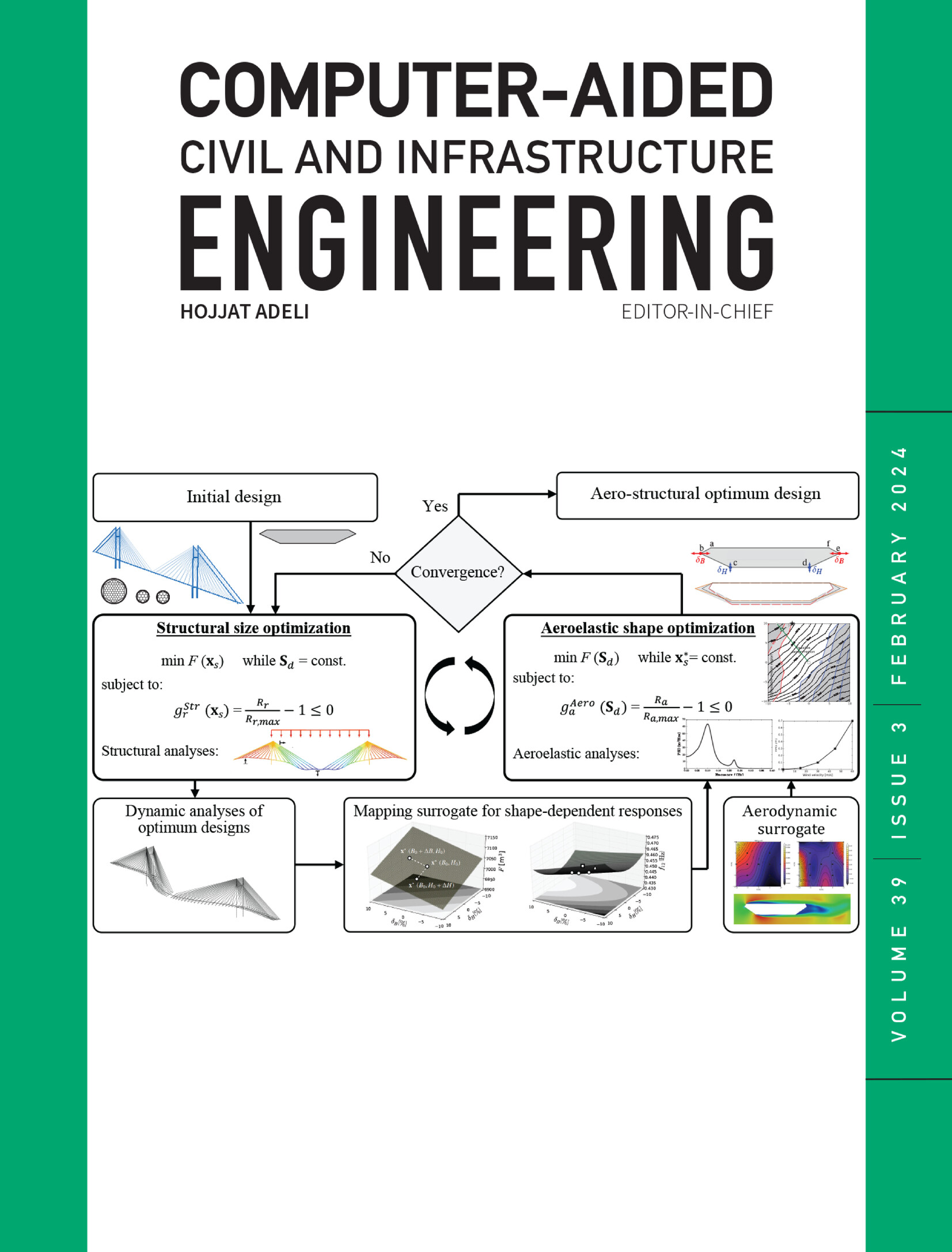Large language model for post‐earthquake structural damage assessment of buildings
IF 9.1
1区 工程技术
Q1 COMPUTER SCIENCE, INTERDISCIPLINARY APPLICATIONS
引用次数: 0
Abstract
A rapid and accurate assessment of structural damage to buildings in the aftermath of earthquakes is critical to emergency responses and engineering retrofit decisions. However, current in situ building damage assessment is primarily conducted through visual inspections by engineering professionals and deep learning techniques using single‐modal information, which are time‐consuming and unable to effectively integrate visual and textual information. In recent years, multimodal learning methods and large language models (LLMs), which could process visual and linguistic information, have emerged as viable alternatives for damage assessment of building constructions. In this study, a vision question–answering model for structural damage assessment (SDA‐Chat) is developed that automatically generates professional textual interpretations of structural damage images via multi‐round visual question–answering (VQA) interactions. A three‐stage training strategy that includes instruction fine‐tuning is designed to improve the model's VQA accuracy. The cross‐modality projector based on dimension reshaping and parallel network architecture is developed to enhance the accuracy and speed of alignment of multimodal features. Comparative experiments are conducted on the self‐constructed dataset containing 8195 pairs of structural damage images and corresponding damage description texts, focusing on various advanced LLMs. The results highlight that the SDA‐Chat can simultaneously process seven different tasks, demonstrating the effectiveness of the proposed method. The highest question–answering accuracy and efficiency of the model reached 83.04% and 435.31 tokens/s, respectively. In addition, high‐precision and lightweight solutions are designed for different application scenarios.地震后建筑物结构损伤评估的大语言模型
快速准确地评估地震后建筑物的结构损坏对应急响应和工程改造决策至关重要。然而,目前的原位建筑损伤评估主要是通过工程专业人员的视觉检查和使用单模态信息的深度学习技术进行的,这既耗时又无法有效地整合视觉和文本信息。近年来,多模态学习方法和可处理视觉和语言信息的大语言模型(llm)已成为建筑物损伤评估的可行替代方法。在本研究中,开发了一个用于结构损伤评估的视觉问答模型(SDA - Chat),该模型通过多轮视觉问答(VQA)交互自动生成结构损伤图像的专业文本解释。包括指令微调在内的三阶段训练策略旨在提高模型的VQA准确性。为了提高多模态特征对齐的精度和速度,开发了基于尺寸重构和并行网络结构的交叉模态投影器。在包含8195对结构损伤图像和相应的损伤描述文本的自构建数据集上进行对比实验,重点关注各种高级llm。结果表明,SDA - Chat可以同时处理7个不同的任务,证明了所提出方法的有效性。该模型的最高问答准确率和效率分别达到83.04%和435.31个token /s。此外,高精度和轻量级的解决方案是为不同的应用场景而设计的。
本文章由计算机程序翻译,如有差异,请以英文原文为准。
求助全文
约1分钟内获得全文
求助全文
来源期刊
CiteScore
17.60
自引率
19.80%
发文量
146
审稿时长
1 months
期刊介绍:
Computer-Aided Civil and Infrastructure Engineering stands as a scholarly, peer-reviewed archival journal, serving as a vital link between advancements in computer technology and civil and infrastructure engineering. The journal serves as a distinctive platform for the publication of original articles, spotlighting novel computational techniques and inventive applications of computers. Specifically, it concentrates on recent progress in computer and information technologies, fostering the development and application of emerging computing paradigms.
Encompassing a broad scope, the journal addresses bridge, construction, environmental, highway, geotechnical, structural, transportation, and water resources engineering. It extends its reach to the management of infrastructure systems, covering domains such as highways, bridges, pavements, airports, and utilities. The journal delves into areas like artificial intelligence, cognitive modeling, concurrent engineering, database management, distributed computing, evolutionary computing, fuzzy logic, genetic algorithms, geometric modeling, internet-based technologies, knowledge discovery and engineering, machine learning, mobile computing, multimedia technologies, networking, neural network computing, optimization and search, parallel processing, robotics, smart structures, software engineering, virtual reality, and visualization techniques.

 求助内容:
求助内容: 应助结果提醒方式:
应助结果提醒方式:


